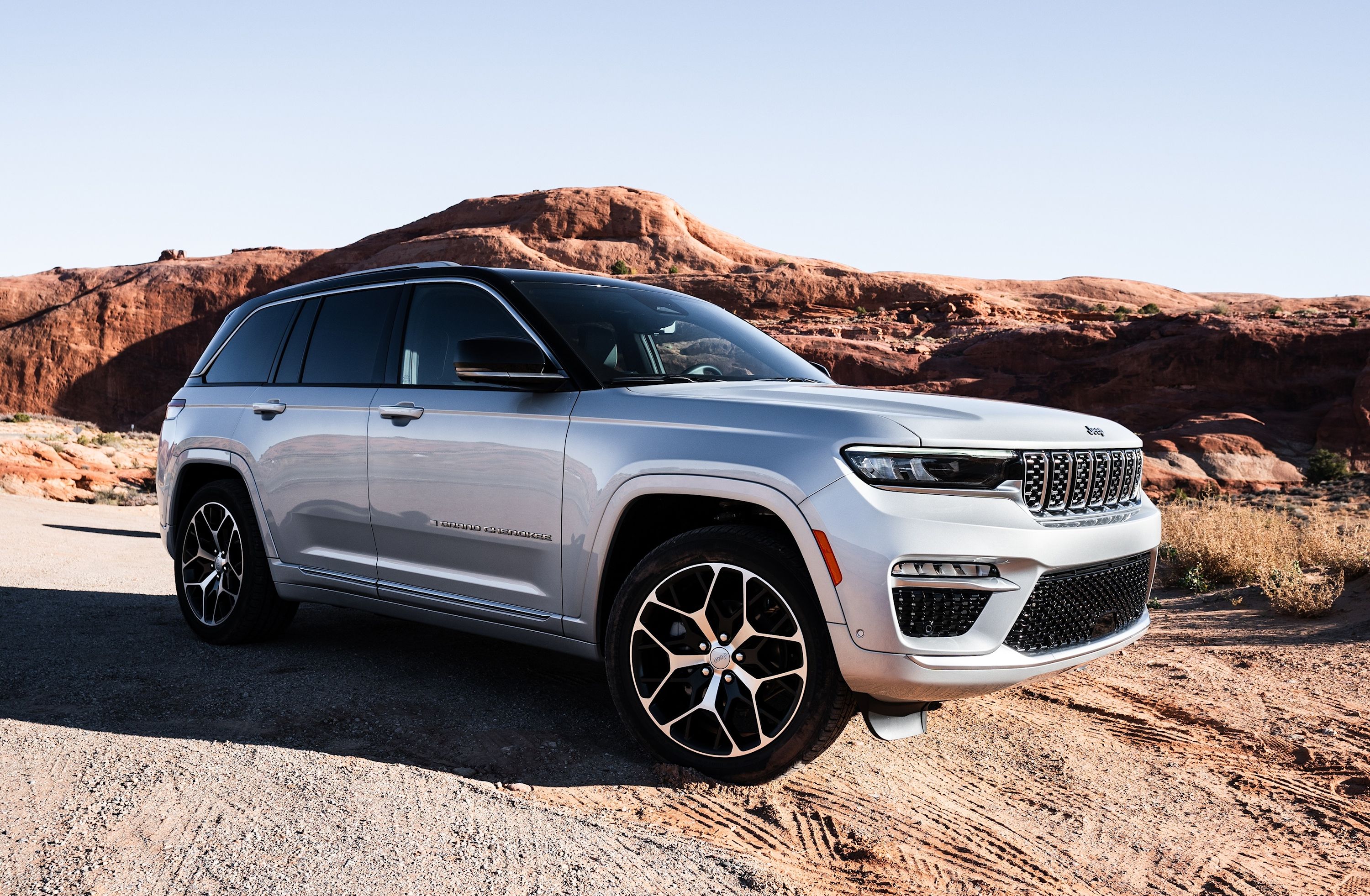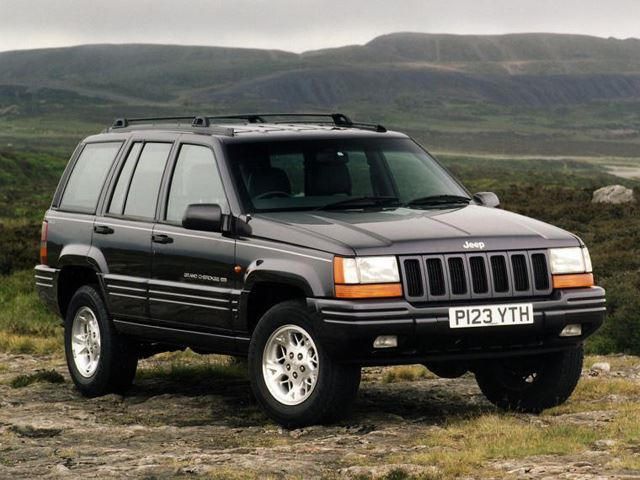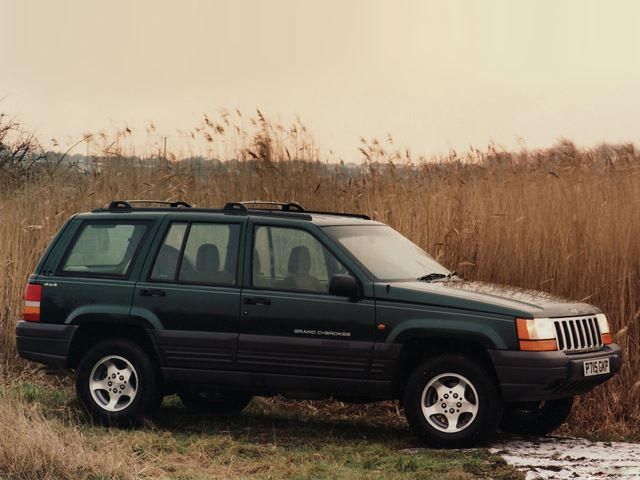
Every now and then a certain car comes along that becomes an icon. Obviously vehicles that fit this description are few and far between, but it's typically immediately clear to the automaker itself, the press and public that something special has arrived. This easily applies to, for example, the BMW 3 Series, Ford Mustang, Chevrolet Camaro, Mazda MX-5 Miata, and Land Rover Defender. Of that group, the youngest is the Miata.
But in 1993, something that's pretty much the polar opposite of that little roadster arrived on the scene: the first generation Jeep Grand Cherokee. Since day one, the Grand Cherokee has retained its unibody chassis, as opposed to body-on-frame construction used for practically all other pure SUVs and trucks.
Combined with Jeep's proven ability to engineer true off-roaders, the Grand Cherokee offers the best of both worlds for many buyers: on road driving comfort with off-road capabilities when required. Although the original Grand Cherokee was launched in 1992 as a '93 model, its development actually began almost a decade before. Jeep was owned by American Motors Corporation (AMC), which was acquired by Chrysler in 1987. As is still the case for Chrysler today (which is now Fiat Chrysler), the Jeep brand was consistently its best moneymaker. AMC was the smallest of the Detroit automakers at the time, and Jeep was essential to its success.
The initial plan was for the Grand Cherokee to serve as a replacement for the smaller Cherokee. AMC invested a lot in the project, and even had famous designers like Larry Shinoda and Giorgetto Giugiaro, who under contract by AMC at the time, were involved with early design work. Not only would the Grand Cherokee serve as a Cherokee replacement, but it'd also succeed the Grand Wagoneer, which was an icon itself. Now, it's important to understand perhaps the biggest reason why Chrysler was interested in buying AMC. Aside from eliminating a domestic competitor, Chrysler was anxious to add the Jeep brand to its portfolio. If Chrysler didn't buy AMC, someone else would and they'd be the ones to reap Jeep's benefits.
Imagine Jeep being owned by GM or even Ford. Anyway, development of the Grand Cherokee continued under Chrysler's watch. The plan, originally, was to launch the Grand Cherokee in the late '80s, but Chrysler CEO Lee Iacocca hit the brakes on that idea. He wanted to focus, first and foremost, on the launch of the second generation Chrysler minivan lineup. Remember, the minivan was Iacocca's invention (he came up with the concept while working at Ford but Henry Ford II wasn't convinced), so he wanted to give his pet project its time in the limelight. The Grand Cherokee came next, and the extra few years of development gave Chrysler time to get it right. The big reveal came in 1992 at the Detroit Auto Show.
Chrysler president Bob Lutz famously drove, with Detroit mayor Coleman Young as his passenger, a red Grand Cherokee off the line at the Jefferson North Assembly Plant to Cobo Hall. There were even police escorts. Lutz drove the new SUV up the stairs and smashed it through a glass window. The whole stunt received mad publicity, and it worked brilliantly. The 1993 Jeep Grand Cherokee was available in three trim levels, SE, Laredo, and Limited, and the only engine offered was a 4.0-liter straight-six with 190 hp and 225 lb-ft of torque. A five-speed manual was standard, but almost everyone opted for the optional four-speed automatic. Base price? $20,185. That's about $33,200 today. Compare that to the 2015 model, which begins at $29,995.
A few standard features included a driver's side airbag and four-wheel anti-lock brakes. Remember, this was the early '90s and those features were often found on more premium cars. By contrast, power locks and windows cost extra. Above all, it was the Grand Cherokee's exterior design that won people over. It just looked good from every angle; tough but modern and oh, so suburban. Needless to say, it immediately caught on with soccer moms – as well as off-road enthusiasts. The Quadra-Link suspension provided more than enough capability for outdoor adventures. Rear-wheel-drive was standard and four-wheel-drive was optional, and further add-ons included fog lamps, skid plates, and a trailer towing package.
For the latter, the optional 5.2-liter V8, with a 220 hp and 285 lb-ft of torque was the preferred choice. Under Chrysler ownership, Jeep also quickly capitalized on the fact that buyers liked luxury features, such as leather and power seats, heated mirrors, keyless entry, and upgraded stereo systems. Thus, the modern American-built luxury SUV was born. Competing automakers quickly followed suit, such as the Eddie Bauer luxury trim version of the then also new Ford Explorer. Motor Trend named the Grand Cherokee V8 as its 1993 Truck of the Year and, along with numerous other awards, sales soared. By 1996, however, the competition had caught up, notably the Toyota 4Runner, and Jeep gave the Grand Cherokee a minor facelift.
Along with some styling updates inside and out and revised packaging, a new top-level luxury trim was added, the Orvis Edition, offered from '95-'97. The 5.2-liter V8 was standard as were tow hooks, two-tone leather seats, unique exterior colors, and special badging. Gas was cheap during this time and American buyers had no problem buying an expensive luxury SUV that wasn't exactly fuel efficient. But by 1997, the first-gen Grand Cherokee was clearly showing its age. It was still a solid SUV, but Jeep wanted to push the second generation model even further upmarket. After all, Grand Cherokee ownership had become a stylish trend and where there's demand there's greater opportunity to cash in.


